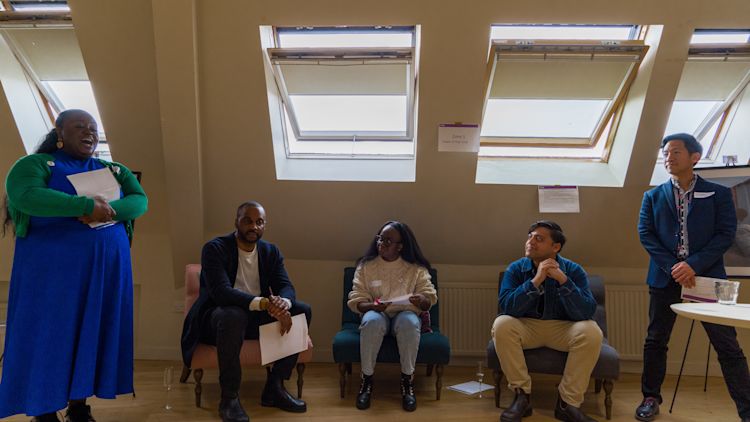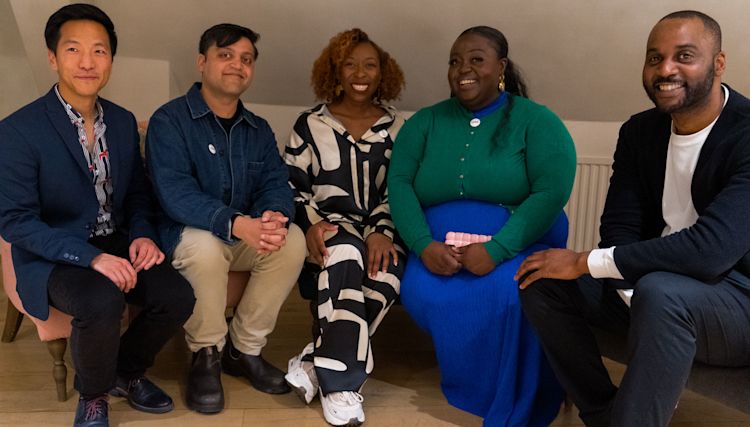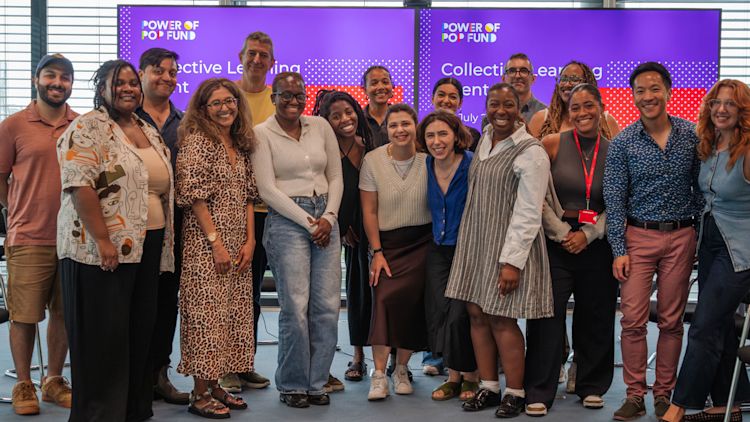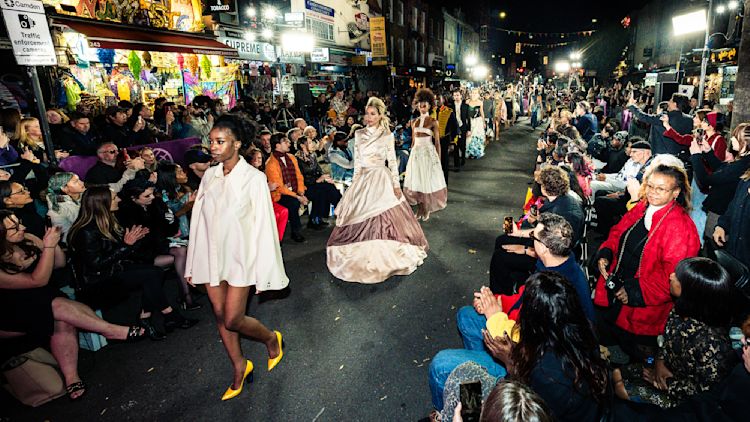
Words by Maxine Thomas-Asante.
Official photos from TAMMAM. Photography credits to Steve Best and Street Life Portraits.
The iconic Camden High Street needs little introduction for its historic contribution to British art, fashion and music scenes. The home of the Jazz Café, Amy Winehouse, Camden Market, attracts people from around the world to experience a site of creative buzz; and yet, the crowds took pause to experience this reimagining of Camden as a Catwalk.
TAMMAM used their London Fashion Week 2025 show not just to display incredible fashions but to make social and environmental impact. The entire event showcased incredible young and established designers, dancers, musicians from the local area, as well as exhibiting their own sustainable, reinvented line for 2026. The show was inherently a multi-disciplinary and cross-sectoral collaboration.
The event opened with contributions from Mayor of Camden, Eddie Hanson, and Councillor Sabrina Francis, Cabinet Member for Young People and Culture. Both representatives highlighted that this event was part of a trial to pedestrianise Camden and reimagine the uses for this iconic area of London. The audience were reminded of the importance of pipelining creative talent by creating the opportunity for young people to be involved in the creative industries. Young contributors had been selected through an extensive competition, the prize being to display their designs and performance in front of this unique public audience at London Fashion Week and receive in depth, valuable training at the TAMMAM Atelier.
Following a dance performance by a dance group of students and graduates from Camden schools The Place and Central School of Speech and Drama, and a number of local designers including Stuart Trevor, Wild Daisy, Kin & Cloth, KTCD and Outsider, we were able to experience the creations of TAMMAM. What stands out about TAMMAM are the experimental takes on classic styles. The range included tuxedo suit-style blazers, ballgowns and punk styled biker jackets reimagined in couture cloth, but all with a contemporary edge that brought the unexpected. As each look preceded the next, you could hear the audience from the street gasp in admiration at the innovation being presented both through the designs and the event itself.
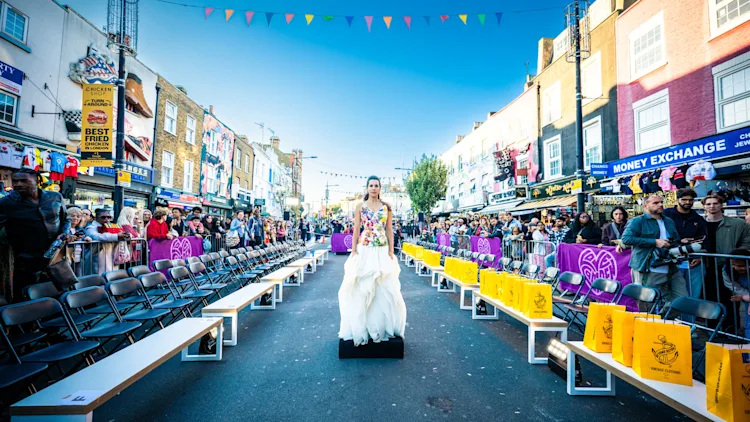
From a social impact perspective, the commitment TAMMAM has towards sustainability made the line even more impressive. Every material is meticulously researched and selected based upon not just their aesthetic quality but their environmental impact. This show only used materials and even garments already in the TAMMAM studio, with the exception of two new materials. The first, a completely new innovative cotton grown in the UK and a plastic free bio leather from the Amazon, called Shiringa. The collection also featured remnant fabrics dyed in various pink shades using grape waste from the wine industry.
Ahead of the show, I got talking to the innovator behind the grape waste dye. The grape skins are sourced from waste wine production near Provence, France. Later in the evening, the stunning gown dyed with grape waste glided down the runway. Suffice to say, I was impressed, not just by the stunning gown itself, but also the thoughtfulness behind the environmental consideration of each piece.
Furthermore, the approach of the catwalk, reserved space for VIPs, guest list attendees, ticketed members of the public. The management of space enabled members of the public to also watch easily from a street view. Considering the historic exclusivity of the fashion industry, this democratised access to an established fashion brand is nothing short of deeply radical. That sense of positive disruption was evident from the selection of models, the structure of the show; and the intentional inclusion radiated through the audience.
If TAMMAM is any indication of the future of fashion, the potential for positive social and environmental impact is self-evident. We are in good hands.
